Searching for "iste"
Can a Child’s Creativity and Persistence be Assessed by a Game?
http://ww2.kqed.org/mindshift/2014/12/16/can-a-childs-creativity-and-persistence-be-assessed-by-a-game/
Evidence Based Design. https://en.wikipedia.org/wiki/Evidence-based_design
For conscientiousness, researchers were looking for evidence of persistence, perfectionism, organization and carefulness.
more on games, gaming and gamification in this blog at
https://blog.stcloudstate.edu/ims/?s=game&submit=Search
Digitization and Libraries
Thursday, September 10, 2015
2 PM Eastern | 1 PM Central
12 PM Mountain | 11 AM Pacific
Digitization is a rapidly growing area of librarianship. Whether you’re a community repository or you need to digitize old materials to save space, the ability to start a digitization project is becoming an essential skill for the modern librarian.
Join us for a new episode of American Libraries Live, Digitization and Libraries. Our expert panel will discuss digitization in both broad and specific terms, looking at current trends and long-term implications for the library community.
Our panel will include:
• Susanne Caro, Government Documents Librarian at University of Montana, author and frequent speaker on digitization and librarianship
• Alyce Scott, Professor, School of Library & Information Science San Jose State University
Tune in for this free, streaming video broadcast! You can pre-register here for this free event (pre-registration assures you a reminder before the event), or go to http://www.americanlibrarieslive.org on September 10 at 2:00 p.m. (Eastern) to view.
We are pleased to welcome the School of Information (iSchool) at San José State University as a sponsor for this episode. The iSchool prepares individuals for careers as information professionals. Graduates work in diverse areas of the information profession, such as user experience design, digital asset management, information architecture, electronic records management, information governance, digital preservation, and librarianship. Based in the heart of Silicon Valley, the iSchool is the best place to learn online.
The iSchool’s Master of Library and Information Science (MLIS) degree program was named Outstanding Online Program by the Online Learning Consortium. This prestigious national award recognizes the school’s commitment to delivering innovative, convenient, 100% online learning solutions for students across the globe. Find out more about the iSchool’s award-winning online educational programs at ischool.sjsu.edu.
21 Top Presentation Tools for Teachers
http://morethanatech.com/2015/07/21/21-top-presentation-tools-for-teachers/
As repeated by me for years, PPT should not be the one and only. Here are some choices. Please consider that IMS delivers workshops, one-on-one sessions and class sessions on the applications listed below:
What Works on What Device
| Tool |
Windows |
Mac |
iPad |
iPad App |
Chromebook |
Chromebook App |
Android
Tablet |
Android App |
| Animoto |
Yes |
Yes |
Yes |
Yes |
Yes |
Yes |
Yes |
Yes |
| Bunkr |
Yes |
Yes |
Yes |
No |
Yes |
No |
Yes |
No |
| Canva |
Yes |
Yes |
Yes |
No |
Yes |
Yes |
Yes |
No |
| Clear Slide |
Yes |
Yes |
Yes |
Yes |
Yes |
Yes |
Yes |
Yes |
| Creedoo |
Yes |
Yes |
Yes |
No |
Yes |
No |
Yes |
No |
| eMaze |
Yes |
Yes |
Yes |
No |
Yes |
No |
Yes |
No |
| Flowvella |
No |
Yes |
Yes |
No |
No |
No |
No |
No |
| Goanimate |
Yes |
Yes |
Yes |
No |
Yes |
Yes |
Yes |
No |
| Google Slides |
Yes |
Yes |
Yes |
Yes |
Yes |
Yes |
Yes |
Yes |
| Haiku Deck |
Yes |
Yes |
Yes |
Yes |
Yes |
Yes |
Yes |
No |
| Impress |
Yes |
Yes |
No |
No |
No |
Yes |
No |
No |
| Keynote |
No |
Yes |
Yes |
Yes |
No |
No |
No |
No |
| KnowledgeVision |
Yes |
Yes |
Yes |
No |
Yes |
No |
Yes |
No |
| MoveNote |
Yes |
Yes |
Yes |
Yes |
Yes |
Yes |
Yes |
Yes |
| PearDeck |
Yes |
Yes |
Yes |
No |
Yes |
Yes |
Yes |
No |
| PowerPoint |
Yes |
Yes |
No |
Yes |
No |
Yes |
No |
Yes |
| PowerPoint Online |
Yes |
Yes |
No |
No |
No |
Yes |
No |
Yes |
| PowToon |
Yes |
Yes |
Yes |
No |
Yes |
Yes |
Yes |
No |
| Prezi |
Yes |
Yes |
Yes |
Yes |
Yes |
No |
Yes |
Yes |
| Slidedog |
Yes |
No |
No |
No |
No |
No |
No |
No |
| Visme |
Yes |
Yes |
Yes |
No |
Yes |
No |
Yes |
No |
More on this topic at the IMS blog:
https://blog.stcloudstate.edu/ims/?s=presentation&submit=Search
LITA discussion thread on how social media should be run at an academic library:
Very much different from where I am at. But that’s not new, I have voiced the fallacies often in the last 5 years rather frequently.
From: lita-l-request@lists.ala.org [mailto:lita-l-request@lists.ala.org] On Behalf Of Alex Herzberg
Sent: Thursday, August 27, 2015 11:39 AM
To: lita-l@lists.ala.org
Subject: RE: [lita-l] social media administration
Hi Allison,
The Loyola/Notre Dame Library’s social media is run by a committee of 4 full-time staff: two from research & instruction, one from circulation, and one from archives. I’m the committee chair but we all take weekly shifts for posting and monitoring the accounts. This model of sharing the workload has been really effective for us!
I’m happy to answer any questions you might have.
Alex
Alex Herzberg, MLS
Online Learning Librarian
Business Liaison
Loyola/Notre Dame Library
200 Winston Avenue
Baltimore, MD 21212
410-617-6831
From: lita-l-request@lists.ala.org [mailto:lita-l-request@lists.ala.org] On Behalf Of Lisa Rabey
Sent: Thursday, August 27, 2015 6:16 AM
To: lita-l@lists.ala.org
Subject: Re: [lita-l] social media administration
At my last position, I was the systems and web librarian, which included social media. I did the following:
Managed all of the social media accounts (FB, Twitter, Flickr, Tumblr)
Used Hootsuite to post date posts in Twitter.
Used FB to post date posts in FB
Created singular branding across all sites
Created social media best practices
Created social media policy in congruent with the college’s s AUP
Managed the backend of the blog
— Created a calendar for blog post ideas
— Enlisted other people to provide additional content
— edited blog posts from other posters
I’d say I spent 2-5 hours a week on the social media, most of which I managed when I was the reference desk.
The person who replaced me dumped all of the above. So there’s that.
-Lisa
—–Original Message—–
From: lita-l-request@lists.ala.org [mailto:lita-l-request@lists.ala.org] On Behalf Of Erik Sandall
Sent: Wednesday, August 26, 2015 11:49 AM
To: lita-l@lists.ala.org
Subject: Re: [lita-l] social media administration
Hi Allison,
As a librarian and webmaster, I split my time between library and IT.
I’m responsible for the administration and management of our social media accounts. I also post a little, and there are three others (one librarian, two non-libs) who also contribute content.
It’s worked out very well having a variety of staff across departments contributing to our social media efforts. I highly recommend it.
Regards,
Erik.
13 Common Sayings to Avoid
1. “You have potential but don’t use it.”
2. “I’m disappointed in you.”
3. “What did you say?”
4. “If I do that for you, I’ll have to do it for everyone.”
5. “It’s against the rules.”
6. “Your brother/sister was better than you.”
7. “I like the way Toby is sitting.”
8. “You’ll never amount to anything.”
9. “Who do you think you are?”
10. “Don’t you ever stop talking?”
11. “I’m busy now.”
12. “The whole class will miss _______ unless someone admits to _______.”
13. “What is wrong with you?”
How to Host and Promote a Twitter Chat
http://www.socialmediaexaminer.com/how-to-host-and-promote-a-twitter-chat/
listen to the show: http://www.socialmediaexaminer.com/?powerpress_pinw=86452-sme-show
#1: Define the Objective
Always start by defining the objective of your Twitter chat. Find a topic that will appeal to your target audience.
The chat needs to provide value to your audience to be successful. Don’t make it just about your company; tailor it to how you can help your community. For example, if you’re in the photography industry, invite guests to discuss photo editing tips, black-and-white photography, photography inspiration, etc.
An added benefit is that you can repurpose all of the chat contributions into a future blog post. Those who participated in the chat will appreciate having a summary of it, and readers who missed it will enjoy the insight.
#2: Identify Similar Chats
Once you’ve established an objective for your chat, find at least five Twitter chats similar to yours to gather ideas. You can find Twitter chats with tools like TweetReports and Gnosisarts.
TweetReports shows the scheduled times for chats on various topics.
Learn how these chats work. Observe how the host controls the flow of conversation and directs topics. Also find out which guests are invited, how many questions are posed, what times the chats are held and how they’re promoted.
Be sure to participate as well. Answer questions and engage with others. This allows you to build your expertise and gives you insight into what it’s like to participate in a Twitter chat.
#3: Set the Date and Time
#4: Choose a Hashtag
Now comes the fun part: naming your Twitter chat. Typically every chat hashtag ends with “chat” (for example, #mediachat, #influencerchat and #blogchat). Adding the word “chat” signals to people that it’s a Twitter chat instead of a regular hashtag or an event.
When choosing a hashtag, make sure it fits your brand. Also, check that it’s not a Twitter username and hasn’t been used as a hashtag previously.
Use Twitter search to see if your chat hashtag has been used before.
Brainstorm at least 15 chat names and then pick the best one. You might want to seek input from your co-workers.
After you select a hashtag, make sure that you register the Twitter username. You can use this account to hold your chats.
#5: Invite Guests
Next, make a list of at least 20 guests you want to invite.
Ideally, you want someone who has experience being a guest and is interested in holding Twitter chats. If you have an influential user who loves your company, consider inviting that person to be a guest, too.
#6: Prepare Questions
Once you have everything in place and have secured at least four guests in advance, start preparing questions. You’ll need about 7 to 10 questions for your guests. Send these questions to them at least 72 hours prior to the chat so they can prepare their responses.
During the chat, spread out the questions about 6 to 8 minutes apart. Ask your last question about 10 minutes before the end of the chat to allow time for the community to discuss it.
#7: Promote the Chat
The key to making your Twitter chat stand out is to promote it. Here are some ways to do that:
Partner With Other Chats

Partner with other chats to co-promote your chats.
Invite Fans
Promote your chat 12 to 24 hours prior to the event.
Send a Facebook event invite as another way to ask people to join your chat. This is a great way to make sure people will come and remember the date. You can also get word out by sending an email blast through your newsletter.
#8: Run the Chat
On the big day, you’ll need an outline to work from. Here’s a basic script for a Twitter chat.
Five Minutes Before the Chat
Our chat will start in a few minutes. In the meantime, please introduce yourself and what you do [#chatname].
Start of the Chat
It’s time for our [#chatname]! Tonight’s guest is @_____ from _____ who will share _____ with us.
Everyone, please welcome our guest _____ from @_____ to our [#chatname] tonight!
Two to Three Minutes Before the Chat Ends
Everyone, please thank @_____ from _____ for adding so much value to our [#chatname].
Next week we’ll have @_____ from _____, who will be discussing _____. See you next week!
Don’t forget to join (other Twitter chat that you partnered with) now! They have @_____ as their guest.
The easiest way to manage your chat is to use a tool like TweetChat. You can hide retweets so you see mentions only from people, which enables you to respond quickly. TweetChat also automatically adds the chat hashtag to your responses.
#9: Track Results
Content May Be King, But Branded Video Content Rules Marketing Tactics
http://www.inc.com/kelly-hoey/content-may-be-king-but-branded-video-content-rules-marketing-tactics.html
According to a study by Cisco:
- The number of mobile-connected devices exceeded the world’s population in 2014 and by 2019 there will be nearly 1.5 mobile devices per capita
- By 2019, more than half of all devices connected to the mobile network will be “smart” devices.
- Mobile video viewing was responsible for 55% of total mobile data traffic in 2014 and 72% of the world’s mobile data traffic will be video by 2019.
Vooza, Radimparency
Pizza Hut’s “Danger of Self Sticks PSA” which has been viewed nearly 4 million times on YouTube as well as Vooza’s “Startup Class” video
- Start with the audience. Figure out who you’re trying to reach with your content and then reverse engineer from there. For example, we like going after Apple because Apple fans are so insane about their products.
- Expect to roll out a lot of content consistently over time. It takes a while to build up an audience.
- Get an email list going–it’s still the best way to reach fans.
- Answer this question: “Why would people want to share this?” Because if people don’t share it organically, it probably won’t go far. For example, designers love sharing this CEO video with each other because they can all relate to the know-it-all CEO who thinks he/she knows best how to design a logo.
- The more heavy-handed you are with the sales pitch, the less likely people are to share it. Let the funny lead the way whenever possible.
- Don’t be so fearful to push people’s buttons. Have some edge. Make fun of people. HBO is great because there are no advertisers who say, “Don’t say that.”
- Find your intersection. What’s the thing that you can make that no one else can? That’s your island. For Vooza, it’s funny plus tech.
- Make it findable. Think about how people search for things online and get into that stream with the right headlines, keywords, etc.
#MNsummit2015
Main speaker
Aaron Doering
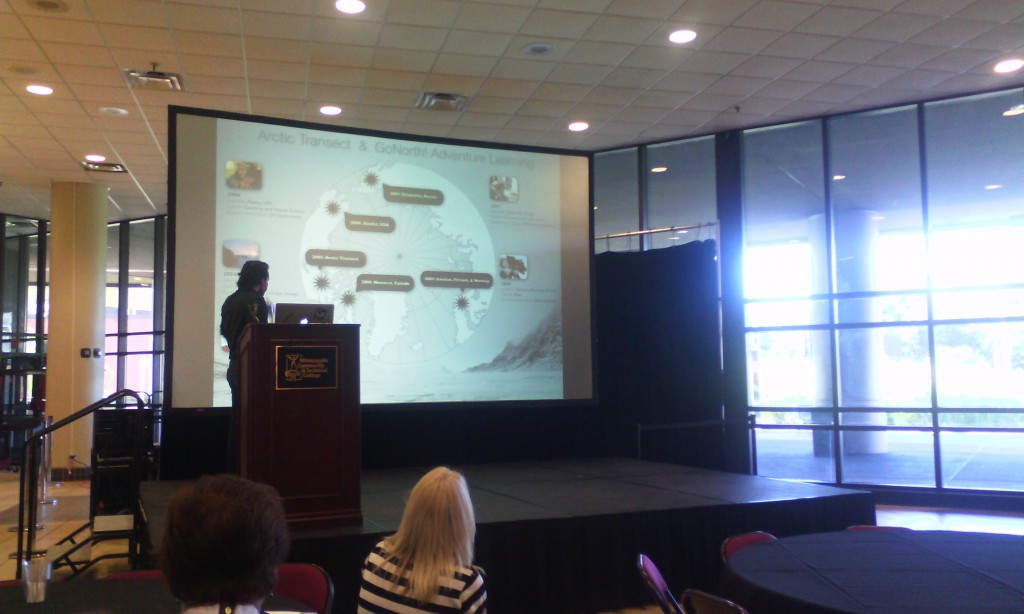
aaron doening
Engagement not completion
Design experience not product
Create change, not simply respond to it
He was a geography teacher : Dimitrina
Experience explore expand. Adventure based how to collaborate in ways we have not collaborated before pedagogical guidelines internet driven
Instructor – content – design
Today: first think is design, content, instructor. So how do we design learning environments is the most important one
Guide learners as designers. Constructivism. Design for meaning. Through the power of the story.
Geotetic design a learning environment learn geography using GIS
Situated movies (student-centered learning)
Grant Earthducation go to the most remote parts of the world to align their education with their culture, instead of what the government is downing as culture
Use of phone: whoever answers instructor’s question first, gets to pose the next question to the rest of the audience.
Design based research
Self-narrative, referencing the experience real world issues in real time
- reference knowledge . knowledge overlap. Technological pedagogical content knowledge.
Geotetic not only how prepare teachers, but desing learning environmwer of the story.
we explore: https://www.we-explore.com/
9.5 design as a learner.
the U Media Lab.
The Changing Earth. App GoX (instagram on steroids. tell their story through the app). How is this different from Google Earth
Raptor Lab (rehabilitate a raptor).
- design experiences
- build trust
- guide learners as designers
- recognize learners as experts
- encourage collaboration
- inspire self narrative
- reference the knowledge domains
- teach for change
- design as learner
adoering@umn.edi chasingseals.com @chasingseals
podcast pontification (audio version of blog self reflections)
Greg Steinke The U
A Digital Story Assignment using WeVideo

WeVideo is the Google response to iMovie cloud
The U is on Google email and thus google drive and all other google tools
The Center for Digital Storytelling. short videos, 3-5 min incorporate photographs with the author narration, reflection
Assignment (verbal directions). process (write a 2 page script, every page is about a minute of video), gather images that support the story; edit the script (rewrite); record audio to the script (use an app on the phone instead of WeVideo), WeVideo can edit the audio recording; edit the story, edit the photos to match the story; YourTube and/or Google+
working with faculty: is the digital story a good fit for your course? two questions: does the course have many writing assignments? does everyone have to do the same type of assignment? do you want to offer choices? do you want your students to share their work outside of the class? to you want to explore opportunities for students to develop 21 century skills?
google communities for sharing
wewideo has a tutorial at Center for Digital Storytelling
students can use the digital story for their eportfolio
the entire exercise is entirely based on mobile devices
time frame: scaffolding options
3d printing products were the tangible result of the project and the digital storytelling just the format to present
Google Drive master folder for the phone images and video; iOS apps: MoviePro, FiLMc Pro, VoiceRecord Pro (including mp3); Android: WeVideo
Storyboard template
Faculty Development Programs: Digital Storytelling Community of Practice
http://it.umn.edu/faculty-development-programs-digital-0
Poster sessions:
Brad Hokanson
http://dha.design.umn.edu/faculty/BHokanson.html
iPAD video kit:

Laurie Conzemius
Critical Thinking

ISTE: http://conference.iste.org/2016/
Joe Lau critical thinking
apps: Popplet blog.popplet.com http://www.popplet.com/ (mindmapping)
into the book: http://reading.ecb.org/
Kahoot – the token system. Polleverywhere https://blog.stcloudstate.edu/ims/2015/05/21/polls-and-surveys-tools-for-education/
Symbaloo https://www.symbaloo.com/home/mix/13eOcK1fiV zotero, easybib, delicious, diigo depending on the grade
youth voices; http://youthvoices.net/ replace social media like teachertube is trying to replace youtube
quandary games in education. https://www.quandarygame.org/ sim city
citizen science alliance http://www.citizensciencealliance.org/
Toontastic https://itunes.apple.com/us/app/toontastic/id404693282?mt=8 now free storytelling
coding and programming: https://www.makewonder.com/robots/dashanddot scratch
Osmo : https://www.playosmo.com/en/ $79.99 + give a set for free Stride principle as a parental involvement
chainlink;
kickword; https://play.google.com/store/apps/details?id=com.makario.wordkick
red herring (four categories) https://play.google.com/store/apps/details?id=com.BlueOxTech.RedHerring&hl=en
http://www.mathplayground.com/logicgames.html
http://www.mathplayground.com/thinkingblocks.html
evaluation:
telestory https://itunes.apple.com/us/app/telestory/id915378506?mt=8
explain everything http://explaineverything.com/
Exploring and Connecting 3D Printing to Teaching and Learning Jason Spartz, Saint Mary’s University of Minnesota
http://pubs.lib.umn.edu/minnesota-elearning-summit/2015/program/23/
http://pubs.lib.umn.edu/cgi/viewcontent.cgi?article=1023&context=minnesota-elearning-summit
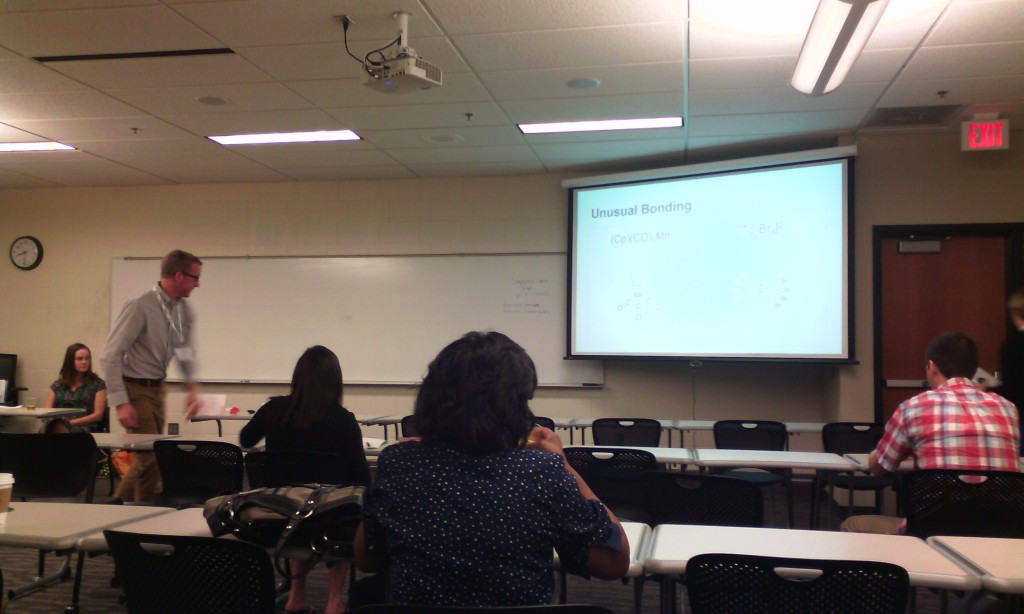
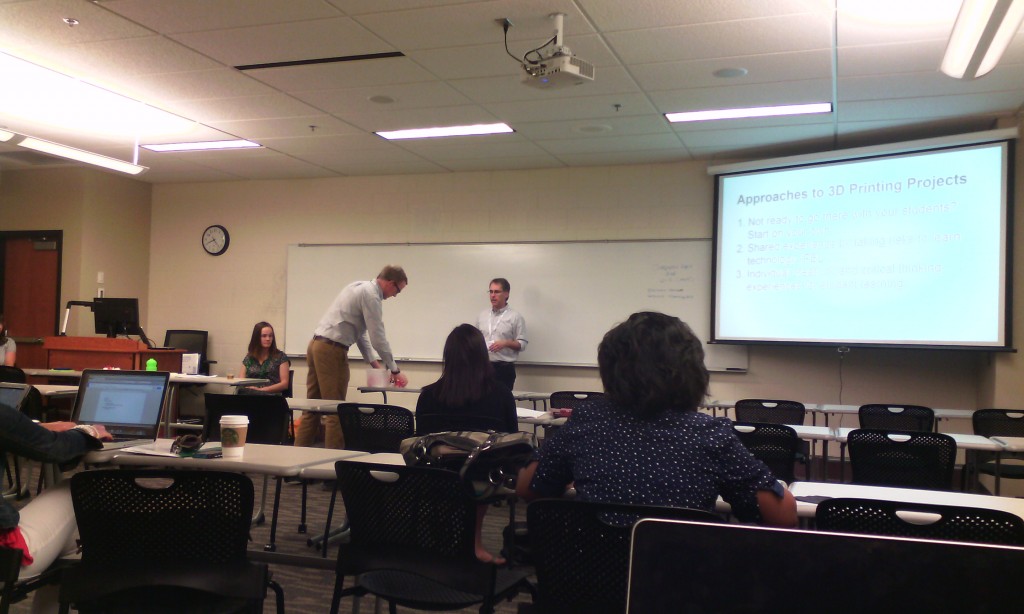
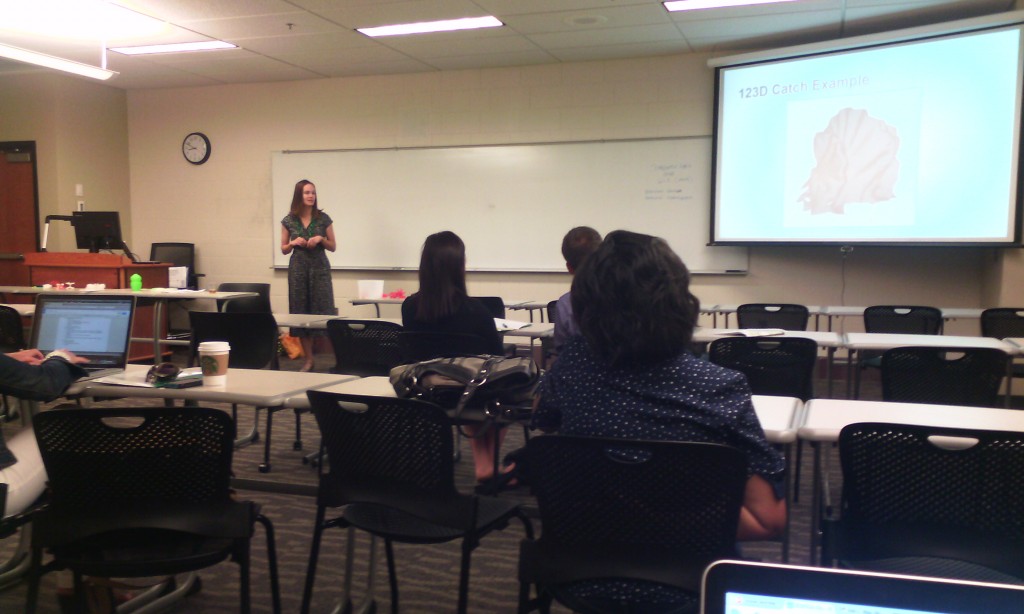
Jason Spartz, Saint Mary’s University of MinnesotaFollow
Lisa Truax, Saint Mary’s University of MinnesotaFollow
Karen Sorvaag, Saint Mary’s University of MinnesotaFollow
Brett Bodsgard, Saint Mary’s University of MinnesotaFollow
chemistry professor. 3D printing with different materials.
what else can be made (e.g. reaction vessel)
printing of atoms
crystalography dbase
Karen: pre-service teachers professor: how to use 3d printers and be comfortable with them. Steve Hoover. Thinkercad and Autodesk123D>
3D academy http://www.team3dacademy.com/index2.html. Pinterest board for3d Printing with resources
Lisa: graphic design. not intuitive. Rhinoceros (not free anymore). 123D strong learning curve. 3d printing will be incorporated in the curriculum. sculpture students and others don’t like fudging on the computer, but Adobe people love it. Some items takes up to 4 hours to print out. when working on the computer is difficult for some students to visualize the dimensionality.
collaborative learning opportunities.
no makerspace or fab lab. additional interest from the theater and business dept. 3d printing is connected to future work skills. new media ecology or media literacy set of skills.
the main presenter: build excitement and interest and gradually step back. how much material goes through and should we charge back. clean and maintenance involved; not too bad. better then a copier. plastic inexpensive. sizes with plastic – $25 and $50. how many project of a spool: depending on the size of the projects but considerable amount. two printers one art dept and one in the faculty dev area.
non profit visually impaired students. how 3d can make difference in special ed.
3d printing lab with access for everybody. ownership brings policy. where housed: neutral place.
only one printer is barely sufficient for faculty to figure out how to use it. purchasing two more if students and curricula to be involved.
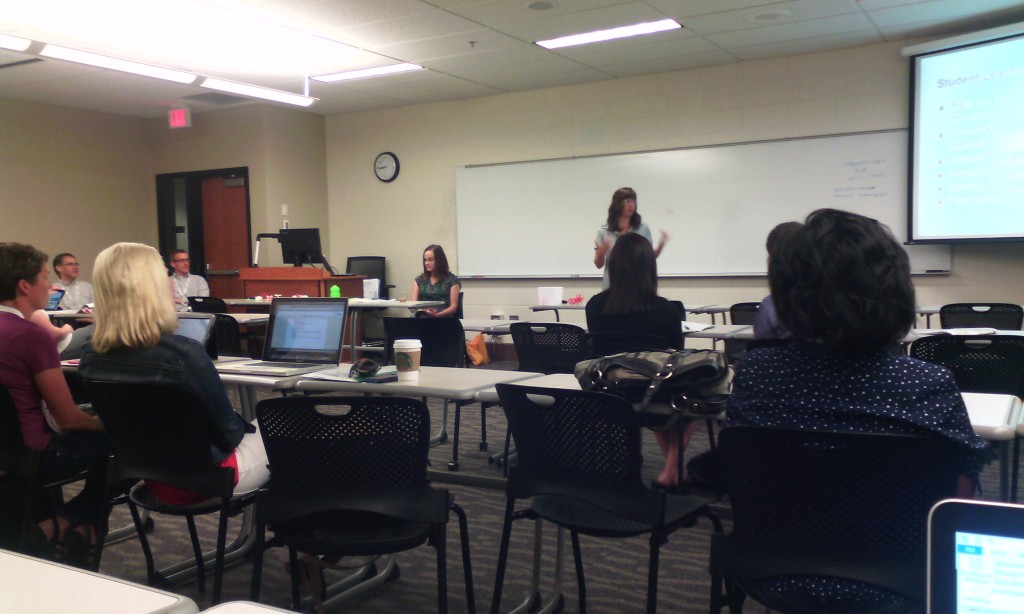



The Balancing Act: Team-Creating an eBook as an Alternative Method for Content Delivery Tom Nechodomu, University of Minnesota

Faculty Created digital stories – google “cultivaitng change series”
student created digital stories –
Susan Andre uses a slide titled “trust” to elucidate how the entire project was enabled. “trust” and “transparency” are sparse currency in the environment I work in. if she is right an ebook ain’t happening anytime soon at my place.
inclining habitat.
students involvement. use stipends. student artists. food for the video interviews. create a community, student centered.
people able to change the book.
copyright process; did you find it cumbersome. copyright permission center.
time span and amount of hours spent: 3-4 months per chapter.
Main speaker
David Wiley. Making Teaching and Learning Awesome with Open
MN Learning Commons
open educational resources
LUMEN
education – sharing feedback, encouragement with students passion about the discipline, yourself
open is not the same as free. free + permissions + copyright permission: 5 r = retain (make and own copies), reuse (use in a wide range of ways), revise (adapt, modify, and improve), remix (combine two or more), redistribute (share with others)
open:
free and unfettered access
perpetual, irrevocable copyright permissions
(look but don’t touch is not open)
tech enables OER permits
traditionally copyright materials on the Internet – not so good ; jet on the road
openly copyright materials on the internet _ yes: jet in the air
permission-less innovation. relatively inexpensive and broad permissions.
intellectual infrastructure of education: learning outcomes/objectives; assessments; textbooks. they are relatively expensive and narrow permissions.
disappearing ink strategies: buyback, rental, ebooks, online subscription
mad, glad, sad, rad: the grumpy cat. student success per dollar
opennetgroup.org/review
change in student learning: replace commercial with open books – small. realign, bigger change. rethink is the large change.
responsibilities:
attribution and meeting other license requirements
thin common cartridge: a way to bring the content to the CMS, but the content remains on the creative commons
disposable assignment: students hate doing them, instructors hate grading them. waste of time and energy
so what?
open education infrastructure: open outcomes, objectives, activities, educational resources
the culture of glued legos must be eradicated. open pedagogy. open credentialing model
summary: don’t settle for “affordable.” improve student outcomes. improve affordability. improve design / academic freedom
links generated from the discussion at my presentation:
I am repeating the fact below since as soon as the iPAD came out on the market. Pity that campus does not listen. Well, it is not the first fact I am sharing on campus and nobody listens.
http://ww2.kqed.org/mindshift/2014/02/24/for-cash-strapped-schools-smart-ways-to-spend-limited-technology-dollars/
“The functions of an interactive whiteboard can be mimicked with a large screen TV and a Chromecast device, which also allows teachers to use any device available whether it’s a document camera, phone, iPad or other tablet.”
Attached below is the entire correspondence:
- a committee is formed.
- the committee decides “democratically” what needs to be done.
- the emphasis, as per administration is on “consensus” not on expertise and per LRS staff on “democratic” (meaning who has more votes), not on expertise.
Who is John Galt?
From:
Sent: Wednesday, July 22, 2015 9:19 AM
To: Miltenoff, Plamen <pmiltenoff@stcloudstate.edu>
Subject: FW: Green Screen for Library Lawn Party?
Hi Plamen. Honestly and respectfully, the idea didn’t move forward because the planning group wasn’t excited about it and the scavenger hunt group had other ideas for ways they wanted to administer the scavenger hunt.
I apologize for not reaching out proactively to tell you that.
From: Miltenoff, Plamen
Sent: Tuesday, July 21, 2015 5:00 PM
To:
Cc:
Subject: RE: Green Screen for Library Lawn Party?
I am mighty curious why ideas, which had been repeatedly offered by IMS faculty to the lawn party committee were not considered and responded to, but ideas, which the lawn party committee thinks that fit the ideas of the IMS faculty are proposed.
Just curious. Don’t expecting answers. Not that they are coming anyhow…
—————-
Plamen Miltenoff, Ph.D., MLIS
Professor
320-308-3072
pmiltenoff@stcloudstate.edu
http://web.stcloudstate.edu/pmiltenoff/faculty/
worse then no hope is false hope: based on my experience working with administration
From:
Sent: Tuesday, July 21, 2015 3:47 PM
To:
Cc:
Subject: Re: Green Screen for Library Lawn Party?
Our green screen has never been set up for these types of activities. It would be really complex to set it up. I’m quite leery of promoting something with no support and no prospect of support. There are no funds for student help and no one available to manage it. Before our days were cut, I offered to continue with some management, using my normal set of extra duty days. Now there are really no resources to operate the studio.
I think this would be logistically difficult to do and not useful for campus communication.
From:
Date: Monday, July 20, 2015 at 12:42 PM
To:
Subject: Green Screen for Library Lawn Party?
Hi . We continue to brainstorm ideas for promotion of library services for the Library Lawn Party. Wanting to learn a little more about the green screen…thinking it would be a nice promotion for the studio. Would you have ideas for how we could incorporate the green screen into the event? We could get students down to the studio and in front of the screen.
Perhaps we could have them read something on cue cards and then edit it together…you’ve probably seen things like that…where each word in a string is spoken by a different person.
Or could we somehow put students in front of it and put something crazy in the background and have the image stream to a monitor somewhere?
Would either of these ideas be feasible? Would it be difficult??










